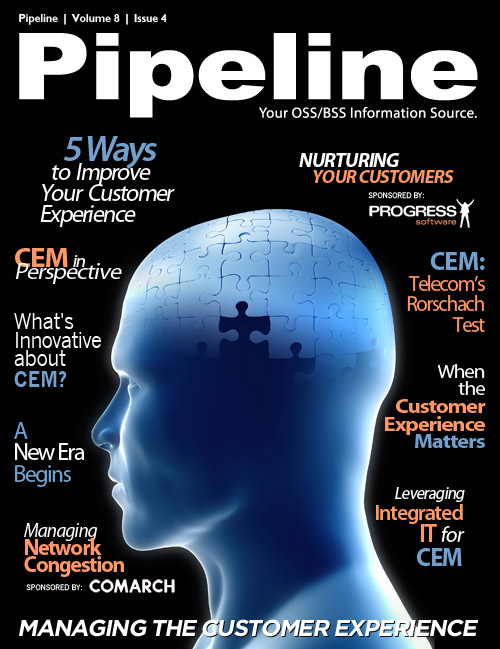Nurturing Your Customers

Most customers churn for similar reasons. There are some common pitfalls that create a negative service experience that ultimately leads to the demise of the customer relationship. These pitfalls can permeate the entire lifecycle of the customer (Fig. 1) and, if not properly managed, can create a systemic negative perception which could have been avoided by a proactive, end-to-end customer experience management (CEM) strategy. These pitfalls are the primary reasons customers churn and managing them forms the foundation of CEM. They include such things as:
- Service Delivery Issues: accurately fulfilling service orders, managing changes in services, and maintaining a consistent quality of service is the foundation of a CEM strategy. Without it, your customers’ very first interaction with your company could be their last and that negative perception may indefinitely persist. If nothing else, this negative customer experience could create a customer-provider relationship that lacks the loyalty that keeps customers from churning.
- Quality of Service Issues: customers expect a consistent and predictable quality of service. The legacy process of reacting to service issues as they arise no longer works. Service providers can eliminate many negative customer touch-points that have a significant impact on the customer experience by proactively recognizing, managing, and preventing service issues. When issues do arise, they can and should be addressed immediately, effectively, and proactively with the customer; and then taking the necessary steps to prevent them from occurring again.
- General Aggravation: every interaction customers have with their service provider shapes their experience and the perception they have of their service provider. Gaining visibility into these touch-points, and which are positive or negative, can be the key to designing an effective CEM strategy. Service providers can efficiently eliminate negative touch-points by leveraging their unique and collective understanding of the customer Operational and Business Support Systems (OSS and BSS). After negative touch-points have been eliminated, positive touch points can be created and even automated to further improve and differentiate the customers’ experience and even build priceless customer loyalty.
- Billing Disputes: all too often the customers’ most frequent interaction with their service provider is to dispute billing issues. By ensuring services are accurately billed, service providers are able to significantly reduce the number of negative interactions that their customers experience.
- Service Stagnation: in today’s dynamic communications and entertainment marketplace high-consumption customers are on the constant lookout for the next best thing. Even when the service experience isn’t entirely negative, some customers will churn just to have the latest-and-greatest. By using customer information to identify these customers and understanding their interests, service providers can create a unique customer experience, craft innovative service and product strategies, and effectively target campaigns to the customers that are most likely to adopt them, at the time when they would welcome the offer.
Service providers’ wealth of customer information and intimate understanding of their customer puts them in an extremely advantageous position. Using this collective customer intelligence (CCI) to both remove negative touch-points and create uniquely positive experiences could dramatically set them apart from their competitors. However, the cultural transition and operational evolution required to leverage this advantage may be their biggest obstacle. Meanwhile, the competition is fierce and many other competitive providers are finding new innovate ways to mine more information from their customers to create more innovative and personalized service offerings.











